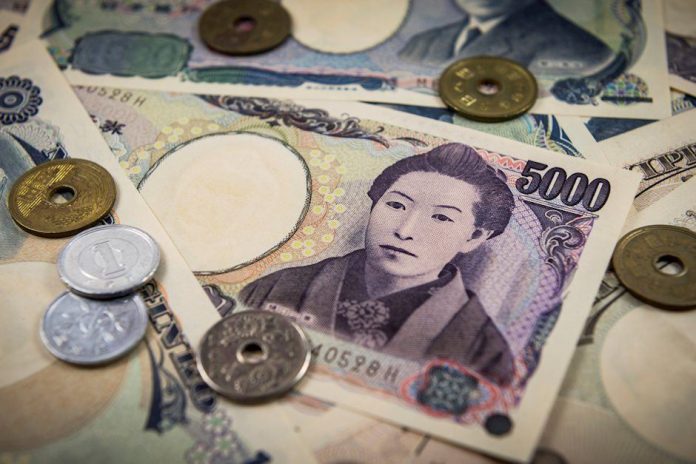Introduction
The USD/JPY currency pair has recently demonstrated notable recovery and stability, hovering around the 154.00 mark. This stability is a significant indicator in the foreign exchange market, reflecting underlying economic conditions and market dynamics. Understanding these factors is crucial for traders and investors who rely on currency pair movements to make informed decisions.
Economic Data And Market Dynamics
The recent performance of the USD/JPY pair is influenced by several key economic indicators and market dynamics. One of the primary factors affecting the pair is the relative strength of the US dollar and the Japanese yen, driven by economic data from both countries.
In the United States, the Federal Reserve’s monetary policy plays a crucial role in the dollar’s strength. The recent tepid performance of the US dollar can be attributed to increasing market expectations of potential rate cuts by the Federal Reserve. These expectations are based on various economic indicators, including inflation data, employment statistics, and overall economic growth. When the market anticipates a rate cut, the dollar tends to weaken, as lower interest rates make the currency less attractive to investors seeking higher returns.
Conversely, the Japanese yen has shown resilience, benefiting from its status as a safe-haven currency. In times of global economic uncertainty or market volatility, investors often flock to the yen, seeking stability. This increased demand for the yen can lead to its appreciation against other currencies, including the US dollar. The yen’s performance is also influenced by Japan’s economic policies, including the Bank of Japan’s stance on interest rates and monetary stimulus.
Technical Analysis Of USD/JPY
From a technical analysis perspective, the USD/JPY pair’s recovery to hover around the 154.00 level is a critical development. Technical analysts closely monitor price levels, trends, and chart patterns to predict future movements. The 154.00 level is seen as a significant resistance level, where selling pressure tends to increase, potentially limiting further upward movement.
Several technical indicators are used to analyze the USD/JPY pair’s performance. These include moving averages, relative strength index (RSI), and Fibonacci retracement levels. Moving averages help identify the overall trend, with shorter-term averages (e.g., 50-day moving average) providing insights into recent price movements, while longer-term averages (e.g., 200-day moving average) indicate long-term trends. The RSI measures the speed and change of price movements, helping identify overbought or oversold conditions. Fibonacci retracement levels highlight potential support and resistance levels based on historical price movements.
Market Sentiment And External Factors
Market sentiment also plays a crucial role in the USD/JPY pair’s performance. Traders’ perceptions and expectations about future economic conditions, geopolitical developments, and market events can significantly impact currency pair movements. For instance, geopolitical tensions, trade disputes, or unexpected economic data releases can cause sudden shifts in market sentiment, leading to increased volatility.
External factors, such as global economic trends and developments in other major economies, also influence the USD/JPY pair. For example, economic performance in the Eurozone or China can indirectly affect the US and Japanese economies, thereby impacting the currency pair. Additionally, fluctuations in commodity prices, particularly oil, can have ripple effects on currencies, given their influence on inflation and trade balances.
Impact Of Federal Reserve Policies
The Federal Reserve’s policies are among the most critical factors influencing the USD/JPY pair. The central bank’s decisions on interest rates, quantitative easing, and forward guidance significantly impact the US dollar’s strength. In recent months, the Fed has signaled a cautious approach, closely monitoring economic data to determine the appropriate course of action.
The anticipation of potential rate cuts has created a sense of uncertainty in the market. Traders are closely watching for signals from the Fed regarding the timing and magnitude of any rate adjustments. Any unexpected announcements or changes in the Fed’s stance can lead to significant fluctuations in the USD/JPY pair.
Bank Of Japan’s Role
Similarly, the Bank of Japan’s policies are crucial in determining the yen’s strength. The BOJ has maintained a highly accommodative monetary policy for years, aiming to stimulate economic growth and achieve its inflation target. However, the yen’s status as a safe-haven currency often complicates the BOJ’s efforts, as increased demand during times of uncertainty can lead to unwanted currency appreciation.
The BOJ’s decisions on interest rates, asset purchases, and forward guidance are closely monitored by traders and investors. Any changes in the BOJ’s policy stance, especially in response to global economic developments, can significantly impact the USD/JPY pair.
Conclusion
The USD/JPY currency pair’s recovery and stability around the 154.00 level highlight the intricate interplay between economic data, market dynamics, and central bank policies. Traders and investors must stay informed about these factors to navigate the foreign exchange market effectively.
Understanding the economic indicators, technical analysis, market sentiment, and external factors influencing the USD/JPY pair can provide valuable insights for making informed trading decisions. As the global economic landscape continues to evolve, staying updated on developments in the US and Japanese economies, as well as central bank policies, remains crucial for anyone involved in forex trading.
